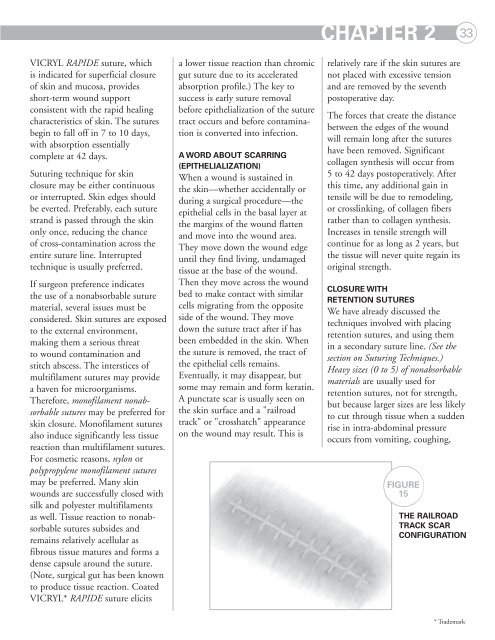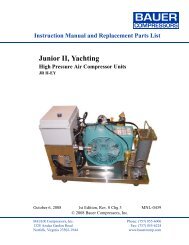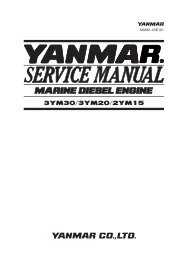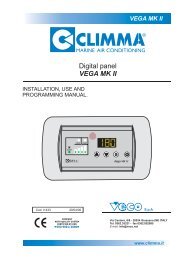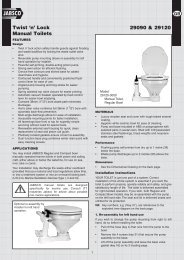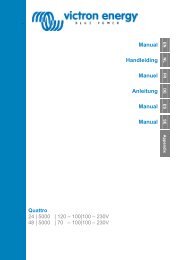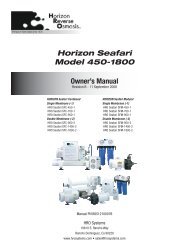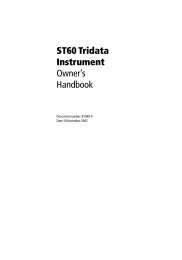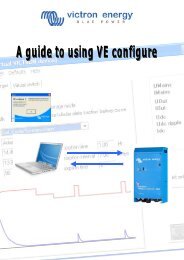Wound Closure Manual (PDF) - Penn Medicine
Wound Closure Manual (PDF) - Penn Medicine
Wound Closure Manual (PDF) - Penn Medicine
Create successful ePaper yourself
Turn your PDF publications into a flip-book with our unique Google optimized e-Paper software.
VICRYL RAPIDE suture, which<br />
is indicated for superficial closure<br />
of skin and mucosa, provides<br />
short-term wound support<br />
consistent with the rapid healing<br />
characteristics of skin. The sutures<br />
begin to fall off in 7 to 10 days,<br />
with absorption essentially<br />
complete at 42 days.<br />
Suturing technique for skin<br />
closure may be either continuous<br />
or interrupted. Skin edges should<br />
be everted. Preferably, each suture<br />
strand is passed through the skin<br />
only once, reducing the chance<br />
of cross-contamination across the<br />
entire suture line. Interrupted<br />
technique is usually preferred.<br />
If surgeon preference indicates<br />
the use of a nonabsorbable suture<br />
material, several issues must be<br />
considered. Skin sutures are exposed<br />
to the external environment,<br />
making them a serious threat<br />
to wound contamination and<br />
stitch abscess. The interstices of<br />
multifilament sutures may provide<br />
a haven for microorganisms.<br />
Therefore, monofilament nonabsorbable<br />
sutures may be preferred for<br />
skin closure. Monofilament sutures<br />
also induce significantly less tissue<br />
reaction than multifilament sutures.<br />
For cosmetic reasons, nylon or<br />
polypropylene monofilament sutures<br />
may be preferred. Many skin<br />
wounds are successfully closed with<br />
silk and polyester multifilaments<br />
as well. Tissue reaction to nonabsorbable<br />
sutures subsides and<br />
remains relatively acellular as<br />
fibrous tissue matures and forms a<br />
dense capsule around the suture.<br />
(Note, surgical gut has been known<br />
to produce tissue reaction. Coated<br />
VICRYL* RAPIDE suture elicits<br />
a lower tissue reaction than chromic<br />
gut suture due to its accelerated<br />
absorption profile.) The key to<br />
success is early suture removal<br />
before epithelialization of the suture<br />
tract occurs and before contamination<br />
is converted into infection.<br />
A WORD ABOUT SCARRING<br />
(EPITHELIALIZATION)<br />
When a wound is sustained in<br />
the skin—whether accidentally or<br />
during a surgical procedure—the<br />
epithelial cells in the basal layer at<br />
the margins of the wound flatten<br />
and move into the wound area.<br />
They move down the wound edge<br />
until they find living, undamaged<br />
tissue at the base of the wound.<br />
Then they move across the wound<br />
bed to make contact with similar<br />
cells migrating from the opposite<br />
side of the wound. They move<br />
down the suture tract after if has<br />
been embedded in the skin. When<br />
the suture is removed, the tract of<br />
the epithelial cells remains.<br />
Eventually, it may disappear, but<br />
some may remain and form keratin.<br />
A punctate scar is usually seen on<br />
the skin surface and a "railroad<br />
track" or "crosshatch" appearance<br />
on the wound may result. This is<br />
CHAPTER 2 33<br />
relatively rare if the skin sutures are<br />
not placed with excessive tension<br />
and are removed by the seventh<br />
postoperative day.<br />
The forces that create the distance<br />
between the edges of the wound<br />
will remain long after the sutures<br />
have been removed. Significant<br />
collagen synthesis will occur from<br />
5 to 42 days postoperatively. After<br />
this time, any additional gain in<br />
tensile will be due to remodeling,<br />
or crosslinking, of collagen fibers<br />
rather than to collagen synthesis.<br />
Increases in tensile strength will<br />
continue for as long as 2 years, but<br />
the tissue will never quite regain its<br />
original strength.<br />
CLOSURE WITH<br />
RETENTION SUTURES<br />
We have already discussed the<br />
techniques involved with placing<br />
retention sutures, and using them<br />
in a secondary suture line. (See the<br />
section on Suturing Techniques.)<br />
Heavy sizes (0 to 5) of nonabsorbable<br />
materials are usually used for<br />
retention sutures, not for strength,<br />
but because larger sizes are less likely<br />
to cut through tissue when a sudden<br />
rise in intra-abdominal pressure<br />
occurs from vomiting, coughing,<br />
FIGURE<br />
15<br />
THE RAILROAD<br />
TRACK SCAR<br />
CONFIGURATION<br />
* Trademark


